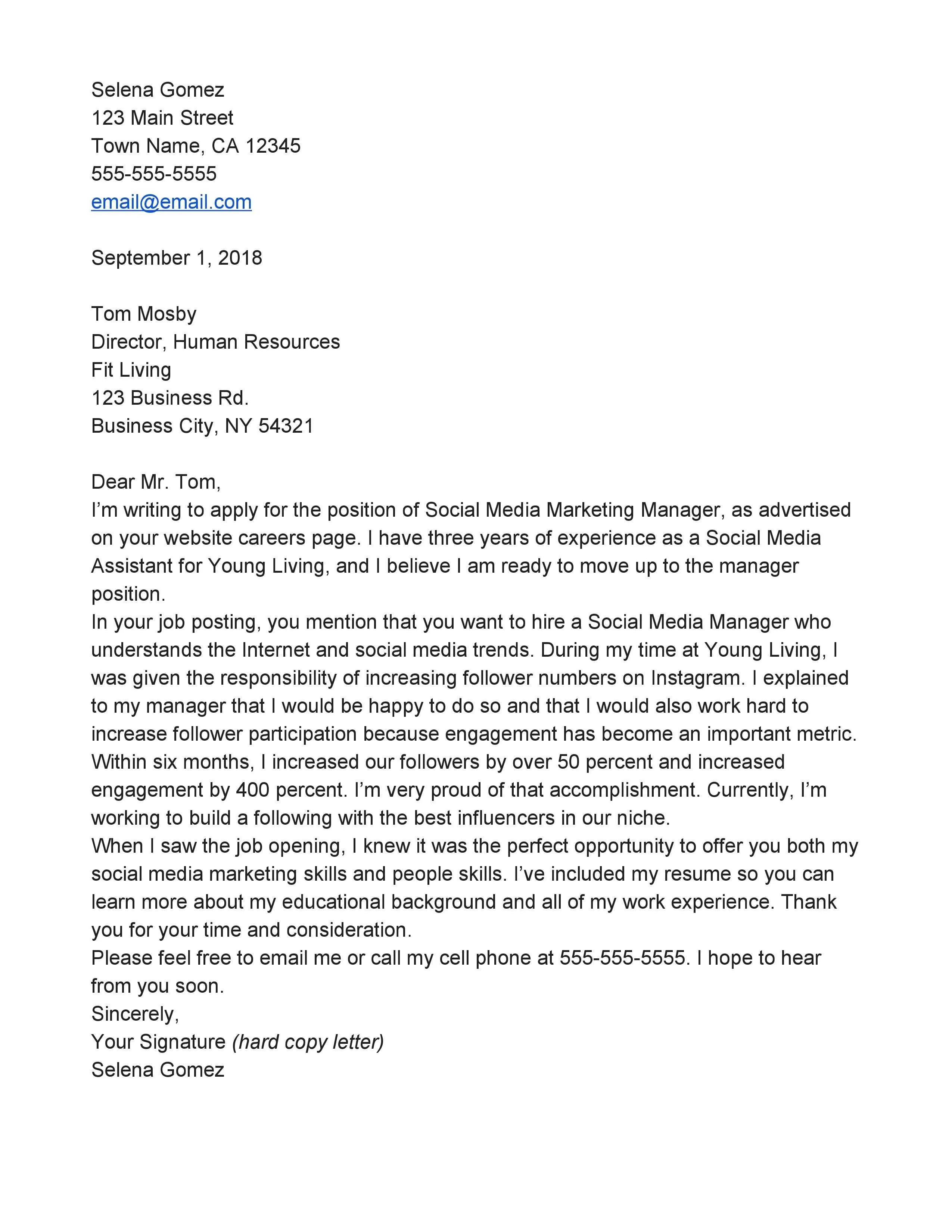Understanding the Purpose of a Cover Letter
A cover letter serves as your introduction to a potential employer, offering a chance to showcase your personality, skills, and enthusiasm for a specific role. It’s an opportunity to go beyond the information presented in your resume and demonstrate why you are a suitable candidate for the job. Think of it as your personal marketing document, designed to persuade the hiring manager to read your resume and ultimately, invite you for an interview.
Why a Cover Letter Matters
In a competitive job market, a well-crafted cover letter can make a significant difference. It allows you to highlight your unique qualifications and tailor your application to the specific requirements of the position. It shows the employer that you have taken the time to understand their needs and are genuinely interested in the opportunity. Many employers still value cover letters, as they provide insights into your communication skills and attention to detail, qualities crucial for success in most professional environments.
Key Elements of a Strong Cover Letter
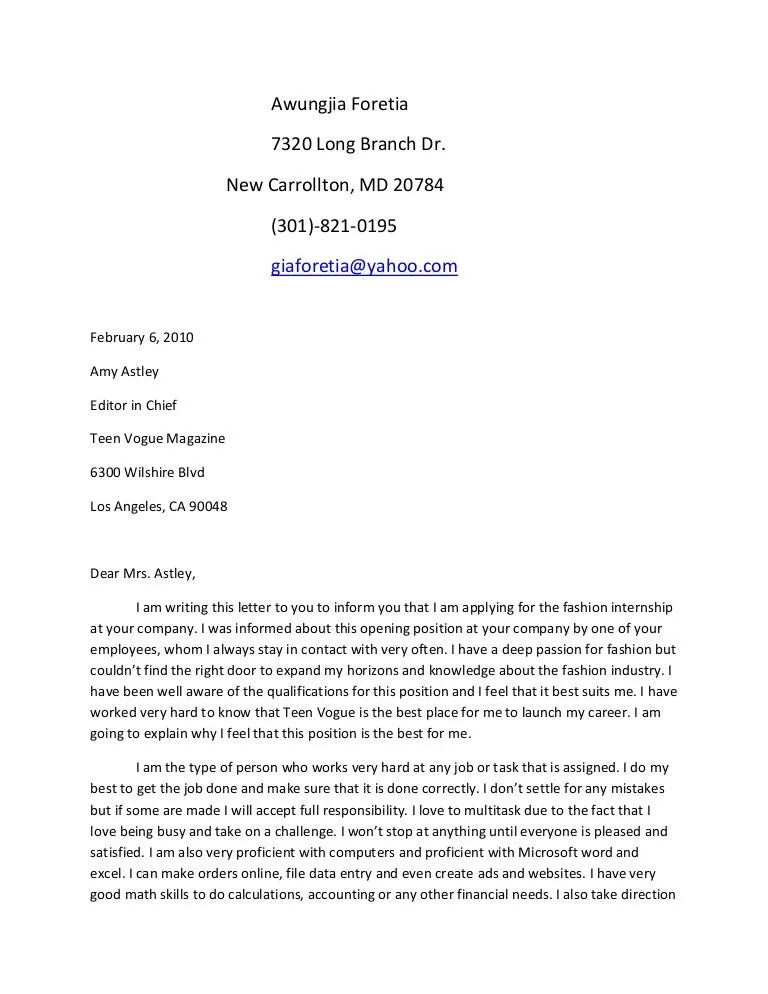
A powerful cover letter consists of several key elements working in harmony to create a compelling narrative about your suitability for the job. From your contact information to your closing statement, each section plays a vital role in conveying your message effectively and leaving a positive impression on the hiring manager. By following these guidelines, you will be able to craft a cover letter that not only highlights your best qualities but also sets you apart from the competition.
Contact Information & Date
Begin with your contact information (name, phone number, email, and optionally, your LinkedIn profile URL) at the top left or right of the page. Include the date below your contact information. This ensures the hiring manager can easily reach you and also provides context for when the letter was written.
Salutation
Address the hiring manager by name if possible, using “Dear Mr./Ms./Mx. [Last Name].” Research the hiring manager’s name through the company website or LinkedIn. If you can’t find a specific name, use a professional greeting like “Dear Hiring Manager” or “Dear [Company Name] Hiring Team.” Avoid generic greetings like “To Whom It May Concern.”
Opening Paragraph
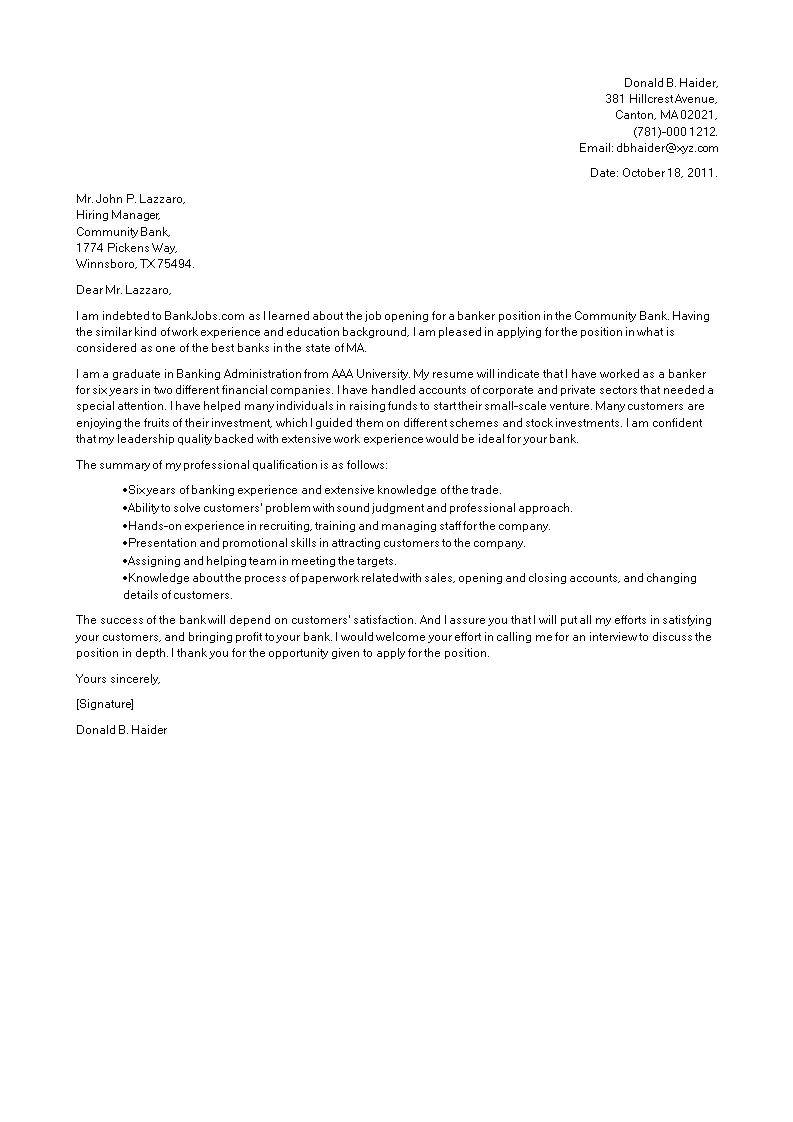
The opening paragraph is your first chance to grab the reader’s attention. State the specific position you are applying for and how you learned about the opportunity. Express your enthusiasm for the role and the company. Briefly mention a key skill or achievement that makes you a strong candidate to immediately hook the hiring manager’s interest. Keep it concise, around 2-3 sentences.
Body Paragraphs Highlighting Skills
The body of your cover letter is where you demonstrate your value. This is where you provide evidence of your skills and experiences as they relate to the job description. Use specific examples and quantify your accomplishments whenever possible. Connect your qualifications to the specific requirements outlined by the employer. Focus on how your skills and experiences align with the company’s needs and goals. Explain how you can contribute to their success.
Demonstrating Relevant Experience
Provide details of your previous roles, focusing on responsibilities and accomplishments relevant to the target job. Mention projects or tasks where you utilized skills mentioned in the job description. Explain how your experiences make you a valuable asset to the company. Use the STAR method (Situation, Task, Action, Result) to structure your examples, providing clear and concise accounts of your achievements.
Quantifying Achievements and Results
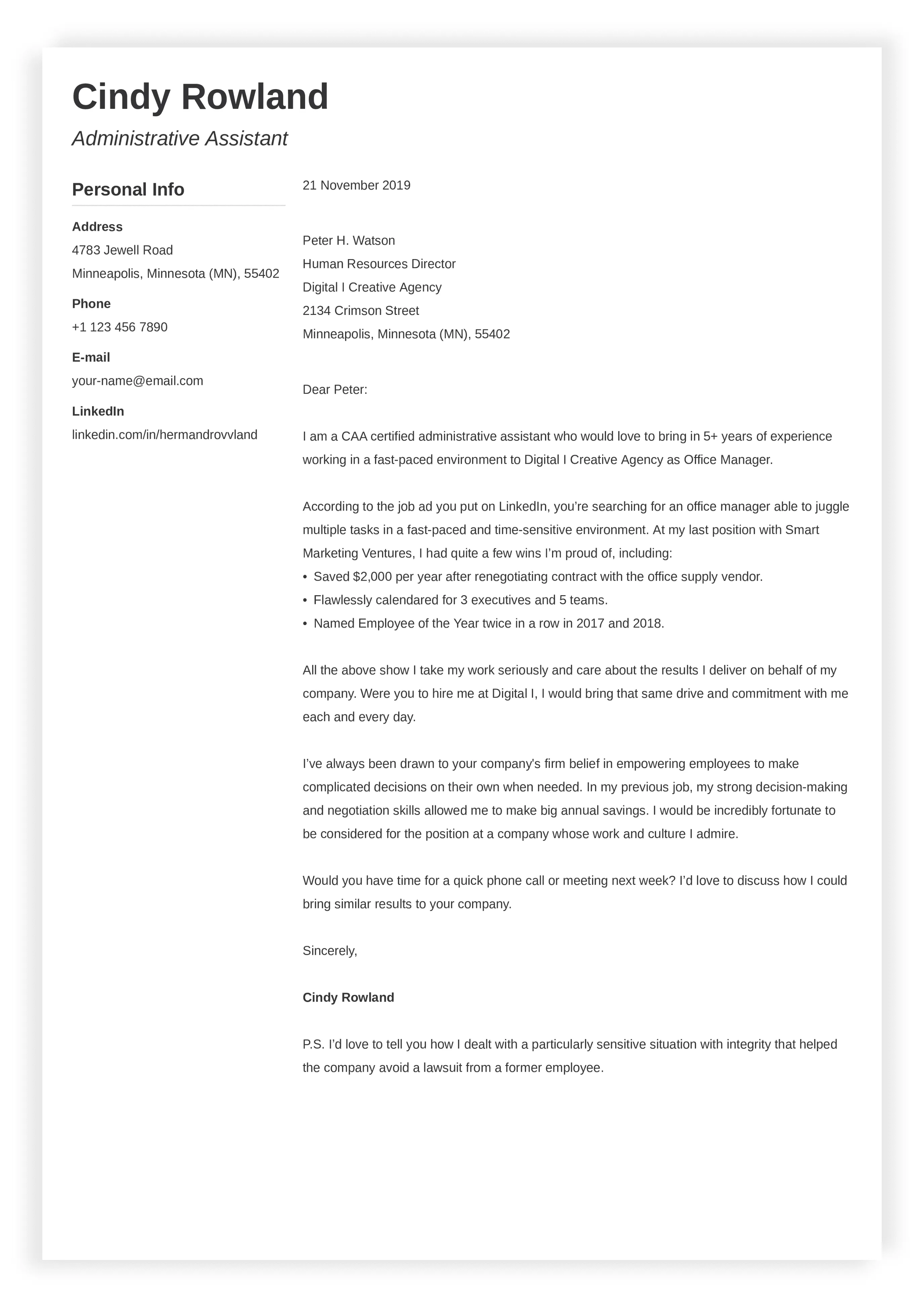
Whenever possible, quantify your achievements. Use numbers to demonstrate the impact of your work. For example, instead of saying “Improved sales,” state “Increased sales by 15% within one quarter.” Adding figures and data gives concrete evidence of your abilities and sets you apart from other applicants. Quantitative achievements show your ability to deliver results and make a tangible impact in a professional setting.
Closing Paragraph
In the closing paragraph, summarize your key qualifications and reiterate your interest in the position. Thank the hiring manager for their time and consideration. Express your eagerness to discuss your qualifications further in an interview. Keep the closing brief and professional, showing that you appreciate their time and are excited about the opportunity.
Call to Action and Expressing Enthusiasm
End your letter with a clear call to action. State your availability for an interview and express your enthusiasm for the opportunity. Mention that you look forward to hearing from them soon. This shows your proactive attitude and ensures the hiring manager knows you are genuinely interested in the role and ready for the next step in the hiring process.
Proper Formatting and Proofreading
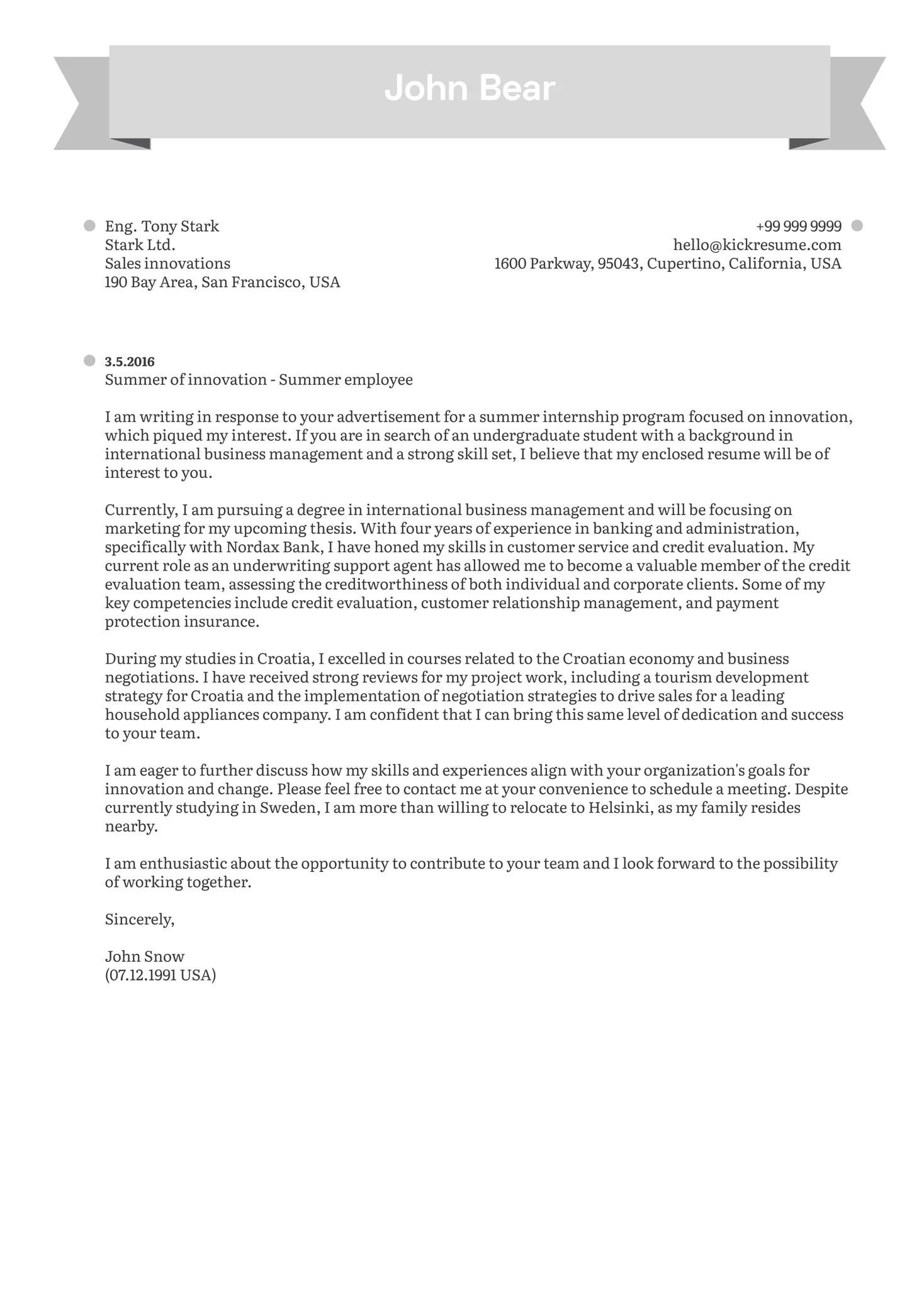
The presentation of your cover letter is as crucial as its content. Proper formatting and meticulous proofreading reflect your attention to detail and professionalism. Ensure that your cover letter is easy to read and free from errors to leave a positive impression on the hiring manager. Your cover letter is a direct reflection of your commitment to the role, making it essential to get these details right.
Formatting for Readability
Use a professional and easy-to-read font, such as Times New Roman, Arial, or Calibri, and keep the font size between 10 and 12 points. Use single-spacing within paragraphs and a blank line between paragraphs. Keep your letter concise, ideally within one page. Use clear headings and bullet points where appropriate to organize your content. Ensure there is sufficient white space to avoid a cluttered appearance.
Proofreading for Errors
Proofread your cover letter carefully for any typos, grammatical errors, and spelling mistakes. Have someone else read your cover letter to provide a fresh perspective. Check for consistency in formatting and language. Ensure you have used the correct company name, job title, and contact information. A single mistake can undermine your credibility, so pay close attention to detail.
Tailoring Your Cover Letter
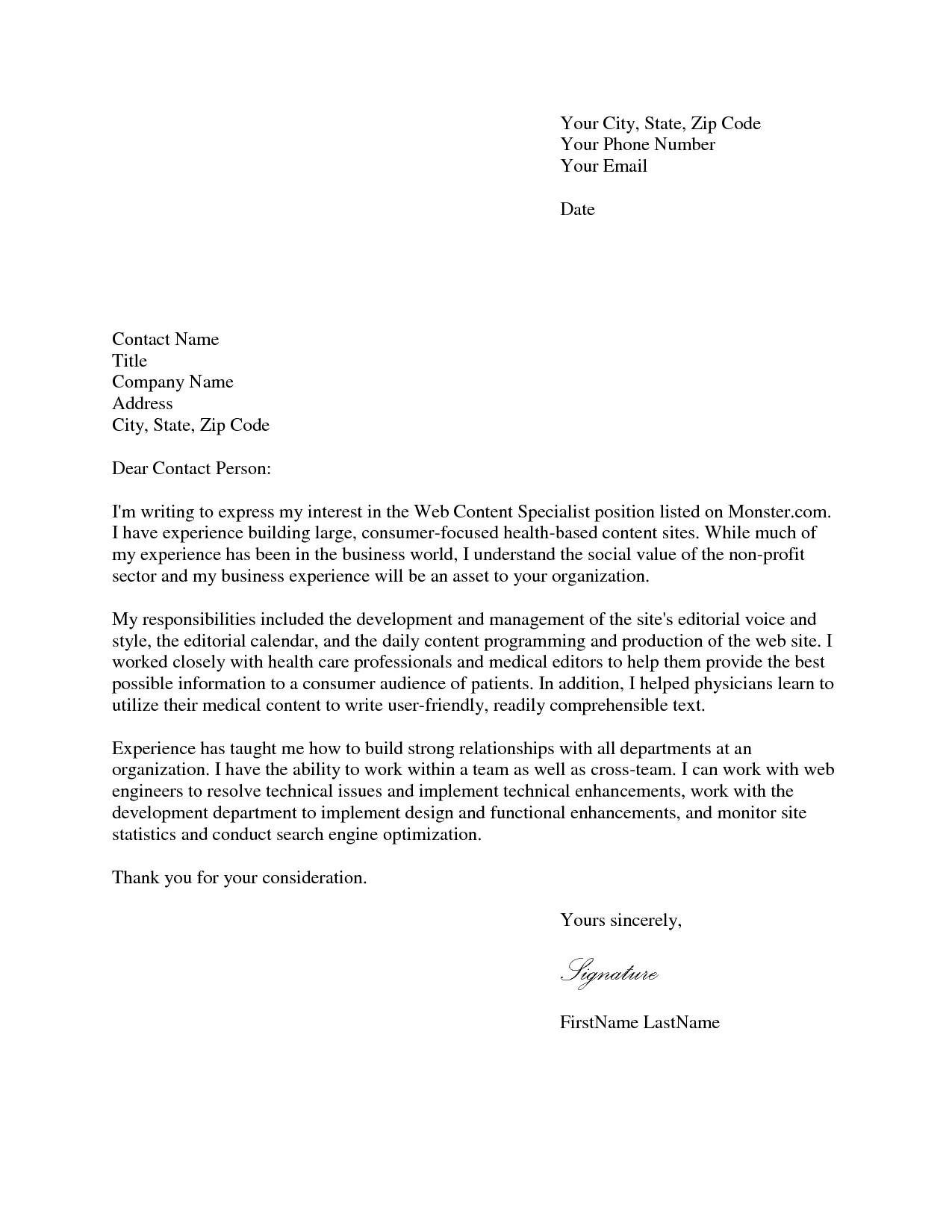
Generic cover letters rarely impress hiring managers. Customizing your letter for each job application demonstrates that you’ve invested time and effort into understanding the specific needs of the role and the company. Adapt your cover letter to show that you are not only qualified but also a great fit for the company’s culture and values. Customization can significantly enhance your chances of success.
Researching the Company and Job
Before you start writing, research the company thoroughly. Visit their website, read news articles, and check their social media profiles to understand their mission, values, and recent initiatives. Carefully review the job description, paying attention to the required skills, experiences, and qualifications. Use this information to tailor your cover letter, ensuring you address the specific needs of the role and align your qualifications with the company’s expectations.
Customizing for Each Application
Highlight the skills and experiences most relevant to the specific job. Use keywords from the job description to demonstrate your understanding of the role’s requirements. Explain how your qualifications and experiences match the company’s needs, showing that you are a perfect fit. Tailor the tone of your cover letter to match the company culture, ensuring your application resonates with the hiring team. This customization increases your relevance and shows that you care.
Common Cover Letter Mistakes to Avoid
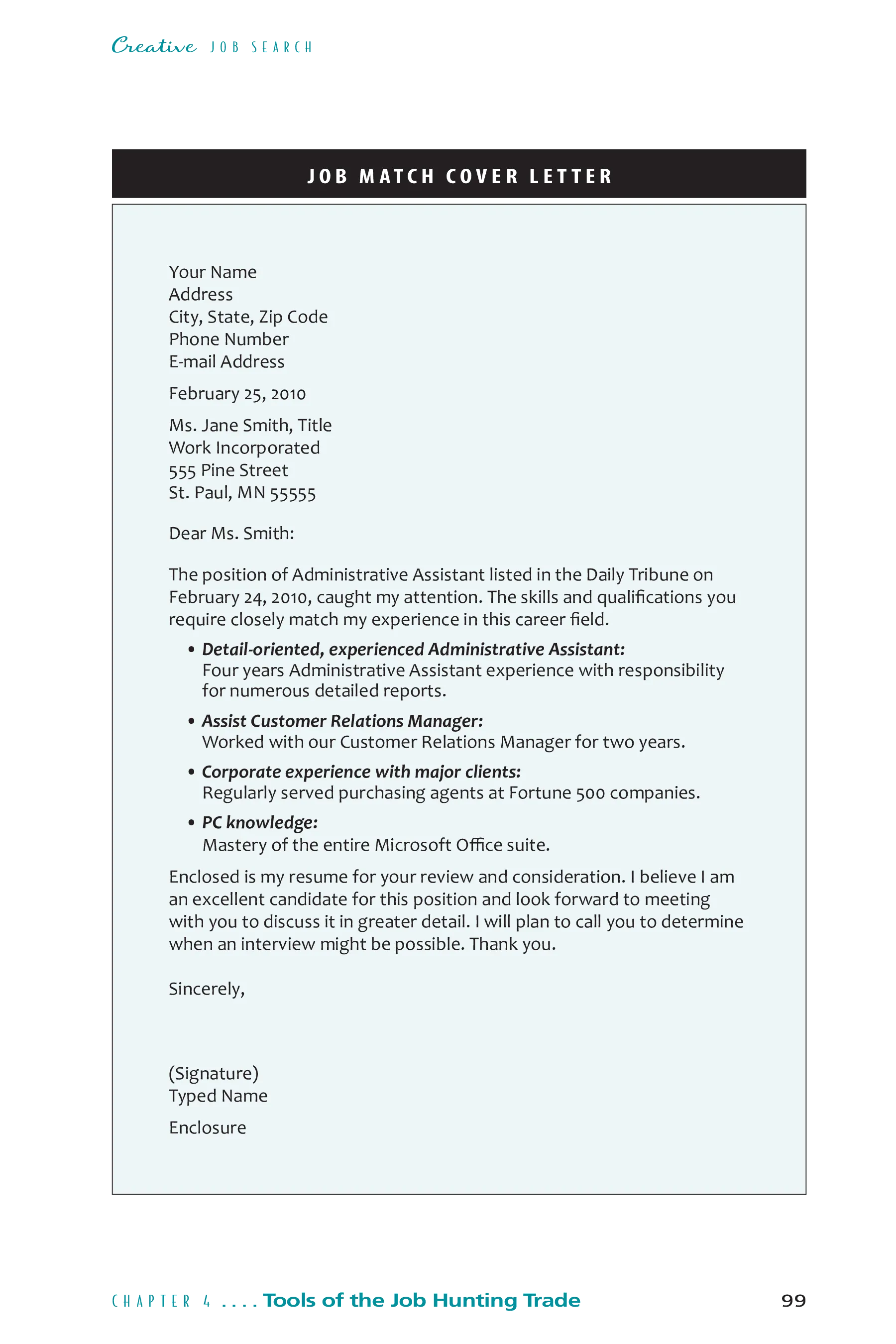
Avoiding common cover letter mistakes can significantly improve your application. By paying attention to detail and understanding what not to do, you can increase your chances of making a positive impression. These mistakes can immediately send the wrong message to the hiring manager, which is why it’s critical to address them.
Generic and Vague Statements
Avoid using generic and vague statements that could apply to any job. Provide specific examples and quantify your accomplishments. Demonstrate your skills through concrete evidence, rather than making general claims. This helps the hiring manager understand your capabilities and ensures that your application stands out from others. Make sure that the reader can understand your value.
Ignoring the Job Description
Do not ignore the job description. Address all the requirements and highlight how your qualifications match the specified criteria. Tailor your cover letter to the job, demonstrating your understanding of the role and its needs. Using keywords from the job description can also help your application get through Applicant Tracking Systems (ATS) and land in front of the hiring manager.
Typos and Grammatical Errors
Typos and grammatical errors are a major turn-off for hiring managers. Proofread your cover letter meticulously. Check for spelling mistakes, punctuation errors, and grammatical inconsistencies. Have someone else review your letter for a fresh perspective. A well-written, error-free cover letter demonstrates your professionalism and attention to detail. This is a small but critical component of getting hired.
Using a Cover Letter Template
Cover letter templates can provide a helpful starting point, but they should be used carefully. A template can help structure your letter, but the key is adapting it to fit your unique situation and the job description. Over-reliance on a template without tailoring it can make your application seem generic, which undermines its effectiveness. Use templates thoughtfully and tailor them for each job application.
Adapting Templates Effectively
When using a template, personalize it with your information and experiences. Replace the generic content with specific details about your skills and accomplishments. Tailor the language to reflect your personality and the company culture. Add a unique opening and closing to make your cover letter stand out. Customize the template by showcasing that you are the best fit for the job.
Best Practices and Examples
Understanding the best practices and studying examples can provide valuable guidance in crafting a powerful cover letter. Learning from these examples can give you inspiration for your own. Observing proven techniques can increase the effectiveness of your application and give you an advantage during your job search. Following these best practices makes a difference in your application’s success.
Example Cover Letter Structure
Start with your contact information and the date, followed by the hiring manager’s information. Use a professional salutation. In the opening paragraph, state the position you are applying for, and express your interest. In the body paragraphs, highlight relevant skills and experiences, quantifying accomplishments when possible. End with a closing paragraph that summarizes your qualifications and reiterates your interest in an interview. Close with a professional sign-off.
Where to Submit Your Cover Letter
Always follow the instructions in the job posting regarding where to submit your cover letter. If the job posting doesn’t specify, attach it to your application or email it to the hiring manager. Ensure the file name includes your name and the job title. Make sure that it is professional and easily accessible for the hiring manager. Adhering to submission instructions is a must for showcasing your attention to detail and commitment to the application process.
